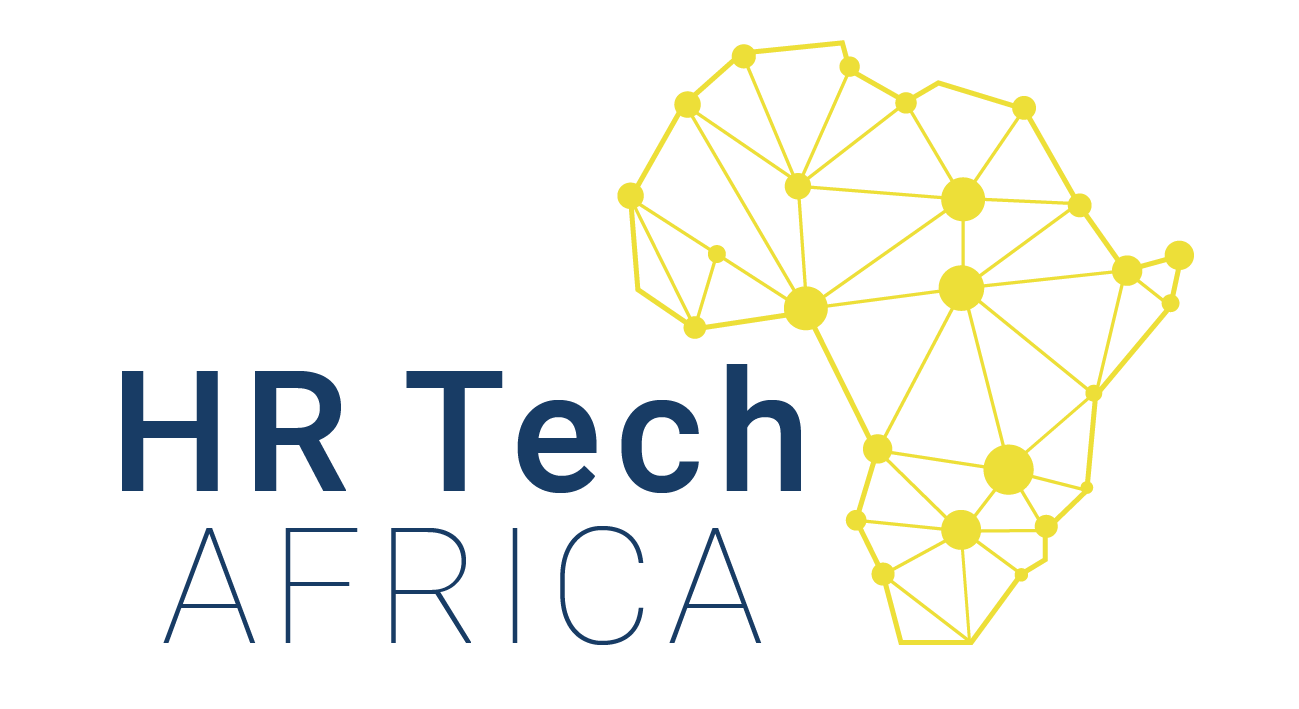
10 Critical Success Factors for a Successful HR Technology Project
Are you planning a HR technology implementation project? Perhaps you are about to start a new digital HR journey?
This quick guide will provide some helpful tips and tricks worth considering.
In the past 10 years, the world of digital HR has grown immensely. Not only are more and more organisations implementing technology but also, there are so many more solutions and vendors coming into the market. There’s much more choice than ever before.
How many of us stop regularly to think about the next 10 years? We definitely should. The game will change again.
In the next decade, the digital HR world looks set to continue changing and evolving rapidly. The next generation of technology – artificial intelligence (AI), machine learning and block chain to name a few is starting to capture significant attention.
But how do organisations ensure success when it comes to implementing technology? It may not be an area that many HR professionals are familiar with. And with so much information out there, it can be very daunting.
Over the past 12 years, I have worked with many world-renowned global organisations, across many different markets and industries. During this time, I have developed a wealth of knowledge and experience when it comes to implementing HR technology. There are many recurring themes I’ve seen throughout my career and many still stand tall, regardless of the technology changes.
I have written 10 tips and tricks to help make your HR technology implementation project a resounding success.
1. Work within a strategy that supports strategic business goals
It’s crucial that you are clear about which problems you are trying to solve by implementing a system.
To be successful, you must fully understand the vision and goals of the business first. At this point, you can think about a digital solution to aid the realisation of these goals.
Technology can be immensely powerful. However, it should be viewed as the ‘enabler’ rather than the ‘driver’.
To understand more on the importance of aligning your technology and business roadmaps, take a look at this article.
2. Standardise and Optimise Global Processes
A HR technology implementation project is an opportunity to do things differently. It allows you to seek out optimisation and enhancements for the ways you currently do things, which you may not otherwise look at.
Businesses are dynamic and should always be looking for better, more efficient ways of doing things. There is always room for enhancements, so do not be afraid to challenge the status quo.
If you are part of a global organisation, think about how the business should implement global vs. local processes. In most cases, global organisations will see the benefits of operating one set of core processes. Such processes may include on-boarding, off-boarding, performance reviews, merit and bonus reviews.
Having global processes will make supporting the system, carrying out upgrades, enhancements and training more straightforward. It will also allow for central control and provide better management reporting.
Ultimately, these factors will help keep costs to a minimum for the business and improve the experience for all colleagues.
Local processes or variations may also be needed. General best practice advice would be to keep such variations limited to where there is a legal or regulatory reason. Local preferences could be permitted in some circumstances. However, if you are not careful, it can be easy to deviate from the global design. This would most likely result in you not realising the full benefits of the global system and creating additional challenges to manage.
3. Choose the right vendor
Implementing a new system is typically a large investment and will be part of a long term strategy. Therefore, selecting to partner with the right vendor is a key element to get right.
It will take time to evaluate all the options before committing to a vendor.
New vendors are coming into the marketplace frequently and there are more options than ever before. I would suggest looking at the things that are important for your organisation.
At an early stage in your HR technology implementation journey, make time to properly assess the vendor candidates.
Tips for selecting the right vendor
These will be different for each company but some typical considerations might be:
- SaaS vs. On premise – There are pros and cons to both. Just because your organisation may have used on-premise solutions before, does not mean this is the best option for the future – more companies are moving to SaaS and cloud-based solutions. Research this thoroughly and take the time to understand the key differences.
- Support offering – What kind of support is offered? Is it part of the deal or at an extra cost? What resources are available on demand? What type of training is provided? Are there active user groups established?
- Update schedules – Are they dynamic? how often are updates? do you have any control over when to implement upgrades? how do they consider feedback from customers?
- Functionality – Think about what functionality will be required and how the system will be used. It is always best to consider your longer term roadmap, if at all possible – don’t just think about the immediate requirements.
- Reporting – Do you have specific requirements? is your business heavily metrics-driven? do you want a suite of standard reports? do you want to be able to write your own reports?
- Customisation – Often organisations want the ability to customise software, but this can often cause more challenges in the long run and increase the complexity and total cost of ownership. Think carefully about the pros and cons of customisation vs. configuration
- Integrations – Will you need to connect with other systems (internal or external)? what does the integration landscape look like?
4. Set-up an effective governance model
Strong governance is key to a successful HR technology implementation.
Ensure that you create a clear governance structure from the outset. This will typically include a Project Steering Board, with decision-maker level representation from the key areas of the business. Such representation would normally include HR, Finance and IT, but possibly others too.
Ensure the overall budget holder is included as part of the Project Steering Board. You should set expectations and agree core principles. Provide regular updates to the Board as the project progresses. Make use of their influence to ensure swift resolution to risks and issues, when needed.
Additionally, you will also have a Project Board. This team would be made up of Project Management, Workstream Leaders and IT Project Managers. It may also include selected members from the Vendor or Implementation Partner Team.
Depending size and complexity, it may well be necessary to create additional governance groups to effectively manage your project.
5. Set-up a strong, dedicated project delivery team
One common mistake I can relate to personally is using existing employees to avoid additional costs. Whilst this may seem like a good way to save money, it has inherent challenges. Dedicated HR technology implementation resources can significantly increase costs but trying to run a major project without additional support could be a recipe for failure.
HR and IT colleagues are often experienced in their own areas. However, rarely have the experience of implementing HR technology projects.
It should not be assumed that IT resources have the correct knowledge and experience required, just because it happens to be a technology platform. The same applies for HR – often HR colleagues have little or no experience of running HR technology projects. Of course there are always exceptions. Some may have a level of experience – but be aware that HR technology is a specialist area and plan your resources carefully.
Another reason for not using existing colleagues is that they often have busy day jobs. Placing unrealistic expectations on people to manage a heavy project load on top of their usual work will more likely have a detrimental effect somewhere. The day job, project or perhaps even the person’s health may suffer.
What makes a successful team
HR technology implementation projects are most successful when there is investment in a dedicated project team put in place. This includes having a strong project manager at the helm. This core team is then able to focus 100% on the project. Having completed several successful HR systems projects, they will have the correct skills and experience. This experience is critical to success.
However, a word of caution. Be sure not to hand over full control to a contract project team. Your existing team, should remain plugged into the project in the context of subject matter experts (see point 7). Unfortunately, I have seen projects fail because full control was delegated to a contract project team. When the team left, all the knowledge walked out the door with them.
Therefore, striking the right balance is what you are aiming for.
6. Plan ahead
HR technology implementations, like other projects have high demands. Focus can easily be taken away from what is coming down the line. But it is crucial to be 10 steps ahead. If you are just looking at the day-to-day, important things will either get missed or hit you when you are unprepared.
Here are a few critical success factors that I find are often left to late in the game. As these are fundamental to success they should really be planned in from the outset. Such examples include:
- Change management
- Training & roll out plan
- An end user support model.
7. Set up global SME representation
As discussed in point 5, you will probably have a contract team to manage the project and do a lot of the heavy lifting. However, sure to include key subject matter expert (SME) representation in the project team. This is particularly during the design and testing stages. These resources can complement the core project team, to add further context around the organisation.
In the case of a global project, ensure that relevant country representation is included. This is important to ensure acceptance of the end solution but will also assist with highlighting local challenges and legal considerations early on.
SMEs will most likely be the ones who are close to the system once it is implemented. Therefore, allowing them to build up knowledge throughout the project will be extremely beneficial. This is always much more effective that trying to handover all the controls at the end. There will still be a level of knowledge transfer required at the end. However, the SMEs will already have context, be familiar with the product and its configuration.
8. Don’t underestimate training and change management
This is one of the most critical success factors but is often not given the attention it deserves. You can have the best system in the world, but effective communication and training can be the difference between success or failure.
It sounds obvious but it is surprising how many people think underestimate its importance.
Take the time to build a strong change management and training plan.
You should think about the following, as a minimum:
- Share your vision for how the new solutions will positively impact the business. How will they make people’s everyday lives simpler, easier and more enjoyable?
- Warm up business stakeholders to the idea, rather than dropping it on them with little warning.
- Showcase and emphasise the benefits of system, rather than the features.
- Don’t just list out the benefits to the business. People will want to know how it will impact them directly, rather than the business as a whole.
- Be clear about implementation dates and any future plans.
- Develop a communication plan for the roll out.
- Provide good quality documentation. Consider the idea of quick guides for specific processes or features, rather than one lengthy user manual. Be clear where to find this documentation.
- Training may not be necessary for everyone. However, consider offering drop in or optional sessions for those who want to understand more or who are struggling.
- Consider offering briefing sessions for senior leaders and line managers before the launch.
9. Consider a suitable and realistic implementation and roll out plan
Try to be realistic on dates for your HR technology implementation (where possible). I’ve all too often seen business leaders set unrealistic target dates. However, if you feel these dates are genuinely not achievable, there should be a challenge back to flag the risks of not meeting those dates. This should remain as a risk on the project risk log, if there are continued concerns.
Another strategy which can be effective is to undersell and over deliver. Focus on promising only the features that you are confident can be delivered in the agreed time frame. Position any additional features as a bonus. This approach which will often help a solution to land much better than promising a whole list of features, which are only partially delivered.
If you promise everything and under deliver, the project may not be viewed as the resounding success you hoped for.
Finally, consider the most effective option for roll out – is a ‘Big Bang’ approach really the best option? The term itself is pretty frightening, so I’ve sometime seen the name softened! However, it’s effectively the same thing. There may be a legitimate reason for rolling everything out at one time. Equally, there may be arguments and merit in staggering the delivery.
This will be a decision that is unique to every business and every situation. However, consider all angles and more importantly, be realistic. Often a phased roll out will allow a much more controlled approach.
10. Data
Believe it or not, data is often not one of the first considerations when for a new HR technology implementation project.
It’s easy to get sucked in to all the features of a new system. But data underpins everything – without accurate data, having a state of the art system is pointless!
Bad data also gives HR a lot of bad press.
You definitely want the new system to provide a solution to any history of inaccurate data – not compound the issue further.
My advice is set aside time to look at and investigate the state of your data early on. This will be even more important for larger organisations that may have multiple countries and legacy systems.
Once you have assessed the state of the data, develop a plan for extracting, cleansing and migrating relevant data to the new system. This process often takes more time than people think, so allow plenty of time and consider which resources you will use.
Thanks for reading
If you enjoyed this, please share it with your network: Twitter | LinkedIn | Facebook
Are you a HR professional in Africa?
If you would like more information on how you can prepare for a HR technology project in your African business, please reach out to me here





